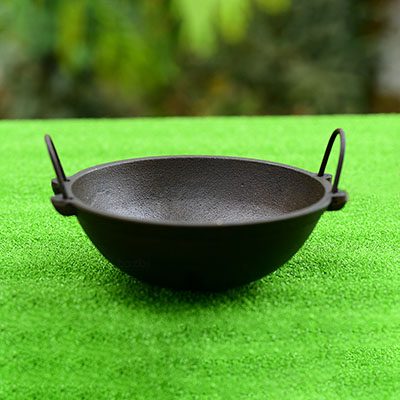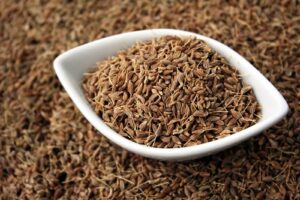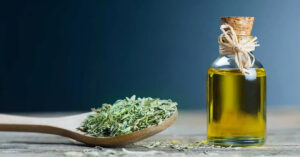For centuries, humans have harnessed the simplicity and power of iron cookware, particularly the humble iron pan. Cooking with pure iron cookware has roots in ancient history, with these durable tools surviving the test of time due to their versatility, affordability, and reputed health benefits. In recent years, as the world becomes more conscious of the impact of processed materials and chemicals on human health, iron cookware have made a notable comeback. But what exactly are the health benefits of cooking in pure iron cookware, and why are people turning back to this ancient method?

In this extensive exploration, we will look at the origins of iron cookware, what it means to cook in them, the health and scientific evidence supporting their benefits, precautions to take, and even some common side effects. By the end, you’ll also have a clear understanding of how to choose the best iron pan for your kitchen and answers to frequently asked questions.
A Brief History of Iron Cookware
The use of iron in cooking dates back to around the 2nd century BCE, primarily in China and parts of Asia, where it was common to use cast iron pots and cookware for cooking over open flames. Iron cookware then made its way into Western kitchens during the Middle Ages, becoming a household staple throughout Europe.
One reason for its historical prevalence was the durability of iron. Unlike pottery or ceramic materials, iron could withstand the heat of fire, and over time, the food cooked in these cookware absorbed rich flavors, which enhanced the cooking experience. Additionally, iron was abundant and easily molded into different shapes and sizes, making it an ideal choice for creating versatile kitchen tools.
Iron cookware were not only practical but were believed to have health benefits. Historical records indicate that ancient cultures viewed iron cooking tools as valuable assets that promoted better health, and some even believed cooking in iron could remedy iron deficiencies. This historical understanding brings us to modern times, where science is now confirming many of the health benefits associated with this ancient cooking method.
What Does Cooking in Pure Iron Cookware Mean?
When we talk about pure iron cookware, we’re usually referring to cookware that is made entirely from iron without the addition of other metals or harmful coatings like Teflon. Cast iron and wrought iron are the two main types of pure iron cookware you will encounter. These cookware are heavy, durable, and typically have no synthetic non-stick coatings, meaning you’ll need to season them naturally to create a protective layer.
Cooking in a pure iron pan typically means allowing food to come into direct contact with the iron, which can result in trace amounts of iron leaching into the food. This process happens due to the high heat and the natural interaction between the food and the metal surface. But why is this important for health, and how can it be beneficial?
Why Is Cooking in Pure Iron Cookware Beneficial?
1. Natural Iron Fortification
The most notable health benefit of cooking in pure iron cookware is the potential increase in iron content in your diet. Iron is an essential mineral, and its deficiency can lead to anemia, fatigue, weakened immune function, and other health problems. Cooking in iron cookware allows small amounts of this vital nutrient to leach into your food naturally, acting as a dietary supplement.
Several studies have supported this benefit. For example, research published in the Journal of Food Science and Nutrition found that food cooked in iron cookware, particularly acidic foods like tomatoes and citrus, absorbed more iron than food cooked in non-iron cookware. This phenomenon, known as “iron leaching,” may help individuals, especially those prone to anemia, maintain healthier iron levels without needing artificial supplements.
2. Non-Toxic Cooking Surface
One of the biggest concerns with modern non-stick cookware is the potential for harmful chemicals to leach into food at high temperatures. Many non-stick cookware are coated with polytetrafluoroethylene (PTFE), commonly known as Teflon, which can release toxic fumes when overheated.
In contrast, iron cookware have a natural cooking surface that doesn’t involve chemical coatings, making them safer for high-temperature cooking. Once a cast iron pan is seasoned, it provides a natural non-stick surface, without any risk of synthetic chemical exposure.
3. Durability and Longevity
Unlike many modern cookware options, iron cookware are incredibly durable and can last for generations if properly maintained. They don’t warp, scratch, or deteriorate with time as some non-stick or aluminum cookware might. This means less waste and fewer expenses over the long term, supporting a more sustainable kitchen.
4. Better Cooking Results
Iron cookware are prized for their ability to retain and evenly distribute heat, leading to better cooking results. Whether you’re searing a steak or frying eggs, an iron pan’s consistent heat distribution ensures that food cooks evenly, reducing the chances of burning or undercooking. This characteristic is especially beneficial for dishes that require high-heat cooking, such as stir-fries or caramelized meats.
5. Environmentally Friendly
Choosing to cook with pure iron cookware supports an eco-friendly kitchen. Since these cookware last so long and don’t require any special coatings or treatments, they produce less waste over time compared to disposable, non-stick, or aluminum cookware. Iron cookware are also 100% recyclable at the end of their life, which reduces their overall environmental footprint.
How to Choose a Pure Iron Pan
If you’re considering adding a pure iron pan to your kitchen, there are a few things to consider to ensure you choose the right one.
1. Type of Iron Pan
Cast Iron: These cookware are created by pouring molten iron into a mold, making them very thick and heavy. They require seasoning and have excellent heat retention, making them ideal for slow cooking or high-heat searing.
Wrought Iron: These cookware are forged by hand and are typically lighter than cast iron cookware. They’re thinner and heat up more quickly but may not retain heat as long.
2. Seasoning Process
When you buy a new iron pan, check whether it’s pre-seasoned or not. If it’s not, you’ll need to season it yourself by coating it with a thin layer of oil and baking it at a high temperature to create a protective layer. This process is essential for preventing rust and creating a natural non-stick surface.
3. Size and Shape
Consider the type of food you typically cook. Iron cookware come in various sizes, and their weight can vary. A smaller skillet may be suitable for single servings, while larger cookware can accommodate family meals. Some come with extra features like a pouring spout or dual handles to make lifting easier.
Scientific Proof of the Health Benefits of Cooking in Iron Cookware
1. Iron Absorption and Nutritional Impact
Several studies have demonstrated the nutritional impact of cooking with iron cookware. One such study published in the Journal of the American Dietetic Association showed that the iron content in foods increased when cooked in iron cookware. This was especially significant for foods that were acidic or had a higher moisture content, such as tomato sauces or stews.
2. The Role of pH in Iron Leaching
The amount of iron transferred from the pan into food depends on the acidity (pH) of the ingredients and the duration of cooking. Acidic foods, like tomatoes and vinegar-based dishes, can leach more iron from the pan compared to neutral or basic foods like fried eggs or stir-fried vegetables. This natural fortification can be a useful dietary addition, particularly for individuals with low iron levels or anemia.
3. Iron Deficiency Prevention
Research has long shown that cooking with iron cookware can be a practical way to combat iron deficiency anemia. A study conducted by the World Health Organization (WHO) found that individuals in developing countries who cooked with cast iron saw significant improvements in their iron levels over time.
Where Are Iron Cookware Being Used Presently?
Iron cookware is used globally, but its popularity varies by region. In countries such as India and parts of Africa, iron cookware are still widely used for everyday cooking. Traditional dishes, especially those that involve slow cooking or frying, are often made in large cast iron skillets or kadhai (deep frying cookware).
In Western countries, iron cookware has seen a resurgence in recent years, particularly among health-conscious individuals and professional chefs. The farm-to-table movement, which emphasizes natural and sustainable ingredients, has contributed to a renewed interest in iron cookware, with many modern restaurants adopting cast iron cookware for their unique ability to enhance the flavor of food.
Precautions When Cooking with Iron Cookware
While there are clear benefits to cooking in iron cookware, there are also some precautions to keep in mind:
1. Avoid Cooking Highly Acidic Foods for Long Periods
Although acidic foods help with iron leaching, prolonged cooking of highly acidic foods, such as tomatoes, in iron cookware can cause the food to develop a metallic taste. It’s best to avoid long simmering times for acidic dishes in iron cookware to prevent this from happening.
2. Iron Overload (Hemochromatosis)
For people with a condition called hemochromatosis, where the body absorbs too much iron, cooking in iron cookware may not be recommended. This condition can lead to an excessive build-up of iron, potentially damaging organs like the liver and heart. Consult a doctor if you have concerns about iron overload.
3. Proper Maintenance to Prevent Rust
Iron cookware require regular maintenance. If not properly cared for, they can rust, especially if exposed to moisture. To prevent this, always dry your pan thoroughly after washing and apply a light coating of oil to keep it seasoned and rust-free.
Are There Any Side Effects?
For the vast majority of people, cooking in iron cookware has no adverse side effects. However, in some rare cases, individuals who are prone to excess iron intake or who suffer from iron overload (hemochromatosis) may experience an overabundance of dietary iron.
Another possible side effect is the development of a metallic taste in food, particularly if acidic ingredients are cooked for extended periods in an unseasoned or poorly maintained iron pan. However, this is more of a culinary issue than a health concern and can easily be mitigated by proper pan maintenance.
Conclusion
Cooking in pure iron cookware offers a unique blend of historical tradition, modern practicality, and significant health benefits. By using iron cookware, you can naturally increase your iron intake, reduce exposure to toxic chemicals found in many non-stick cookware, and enjoy enhanced flavor and texture in your food. While there are some precautions to take—especially for those with specific health conditions like hemochromatosis—most people can benefit from incorporating iron cookware into their kitchens. With proper care and maintenance, a good iron pan can last a lifetime, making it a valuable investment for your health and culinary adventures.
Frequently Asked Questions (FAQs)
1. How much iron can I get from cooking in an iron pan?
The amount of iron leached into food varies depending on several factors, including the type of food, the cooking duration, and the pan’s condition. Studies suggest that iron content can increase by 2-10 times when cooking in iron cookware.
2. Do I need to season my iron pan regularly?
Yes, seasoning is essential to maintain the non-stick surface and prevent rust. It’s recommended to re-season your pan every few months, or whenever the surface starts to lose its non-stick quality.
3. Can iron cookware be used on all types of stoves?
Yes, iron cookware are highly versatile and can be used on gas, electric, and induction stoves. They can also be used in the oven or over an open flame.
4. Is there a difference between cast iron and wrought iron cookware?
Cast iron cookware are heavier and thicker, while wrought iron cookware are typically lighter and more responsive to temperature changes. Both have excellent heat retention, but cast iron is better suited for slow cooking, while wrought iron is ideal for quick, high-heat cooking.
5. Can I wash my iron pan with soap?
You can use mild soap on iron cookware, but avoid harsh detergents. It’s generally recommended to rinse the pan with hot water and scrub it with a brush. If you do use soap, ensure the pan is thoroughly dried and re-seasoned afterward to prevent rust.
Reference : http://www.babycenter.in







